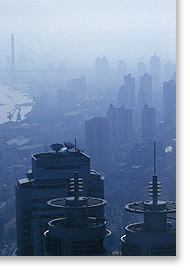Introduction
This revolution in context
Renewable energy
The fourth industrial revolution
Cities are settings of hope
The price of inaction
1 In the hothouse, beyond the peak: the logic of the urban energy revolution
1.1 Energy and urban sustainability in the 21st century
1.2 Fossil and nuclear energy systems, and the industrial construction of reality
1.3 Summary and outlook: Renewable Energy and Renewable City
2 How to cope with Peak Oil by preparing for climate change
2.1 Confronting the risk to cities
2.2 Mitigating adaptation
2.3 Urban risks
2.4 Urban exposure and impacts
2.5 Urban vulnerability
3 Renewable geography
3.1 Other drivers of change
3.2 The design of the Renewable City
3.3 Renewable City form and formation
3.4 Space, time and energy: storing and dispatching renewable power
3.5 Renewable citizenship: support communities and programs
4 Building the Renewable City: tools, trades, technology
4.1 Form follows fuel
4.2 Citywide efficiency
4.3 The Renewable City toolbox
4.4 Urban renewable power finance
4.5 Municipal power
5 Renewable City buildings: guidance and learning
5.1 Renewable city building tools: rating performance
5.2 Learning from renewable building practice
6 Templates for planning and action
6.1 The Solar City® Program
6.2 Rating the Renewable City
6.3 Renewable City engagement: Portland best practice
Glossary
Webography
References



Pudong, the futuristic new Shanghai city centre built only a few years ago using a firework of international design input, is already a monument to yesterday’s technology. Were it to be planned today, it could follow very different principles: those of Renewable City building — an inescapable mandate for China.
photo © James Leynse